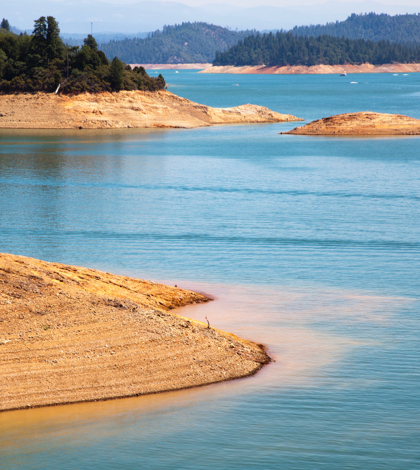The most recent rain storms that pelted Northern California were a boon to helping resolving California’s historic four-year drought.
Shasta Lake, the largest California reservoir at 21-miles-long, reached 101 percent of its historic average last Sunday as billions of gallons poured in from the weekend’s rain. Three months ago, on Dec. 8, the reservoir was just 29 percent full; on Sunday it capped at 77 percent full.
Tom Groves, a manager at Shasta Marina at Packers Bay, said, “A lot of people think it takes years to fill the lake after a drought. But all it needs is one good winter. It will probably be full by May.”
Other Northern California reservoirs were reporting similar water successes. The state’s second-largest reservoir, Oroville in Butte County, reached 69 percent full on Sunday reflecting 96 percent of its historic average for mid-March. Pardee Reservoir, in the Sierra Nevada’s Mokelumne watershed, which serves 1.4 million customers of the East Bay Municipal Utility District, reported being 103 percent of average and 89 percent full.
Also benefiting from the recent storms, Loch Lomond, the largest reservoir in Santa Crus County, spilled over its dam last Sunday, filling it to the top for the first time since 2013.
“It’s very good news,” said Eileen Cross, Santa Crus Water Department spokesperson. “A lot depends on what happens these next few weeks. Based on supply we have now in the reservoir, that would suggest that we don’t need to do restrictions this summer. We’ll know by the beginning of April what course of action we’ll be taking.”
Other totals from the recent storms in Northern California included 5.9 inches of rain at Mount Diablo, Pescadero with 7.2 new inches, 5.7 inches at Summit Road on the Santa Cruz-Santa Clara county line, and Ben Lomond received 6.14 inches. Lesser rain was received around the San Francisco Bay: Oakland received 2.53 inches, Walnut Creek 2.12, San Francisco 3.14, San Jose 0.47 and Palo Alto 0.79.
The effect on summer water restrictions statewide remains unclear. The State Water Resources Control Board has said it will meet in mid-April to decide whether and how much the mandatory water targets issued last summer.
Though experts say all the reservoirs are filling the groundwater remains low after four years of heavy pumping during the drought. The Sierra Nevada snowpack is still only 83 percent of its target because of warm, dry temperatures in February melted large amounts after earlier snows.
Lund, of UC Davis, shared that this winter’s rains have removed the emergency nature of the drought. However, Southern California in particular will still probably see some summer restrictions because rainfall totals have not been as high.
Three of 10 reservoirs in Santa Clara County experienced spilling but no major flooding was reported.
 California Water News Daily Your Source For Water News in California
California Water News Daily Your Source For Water News in California


